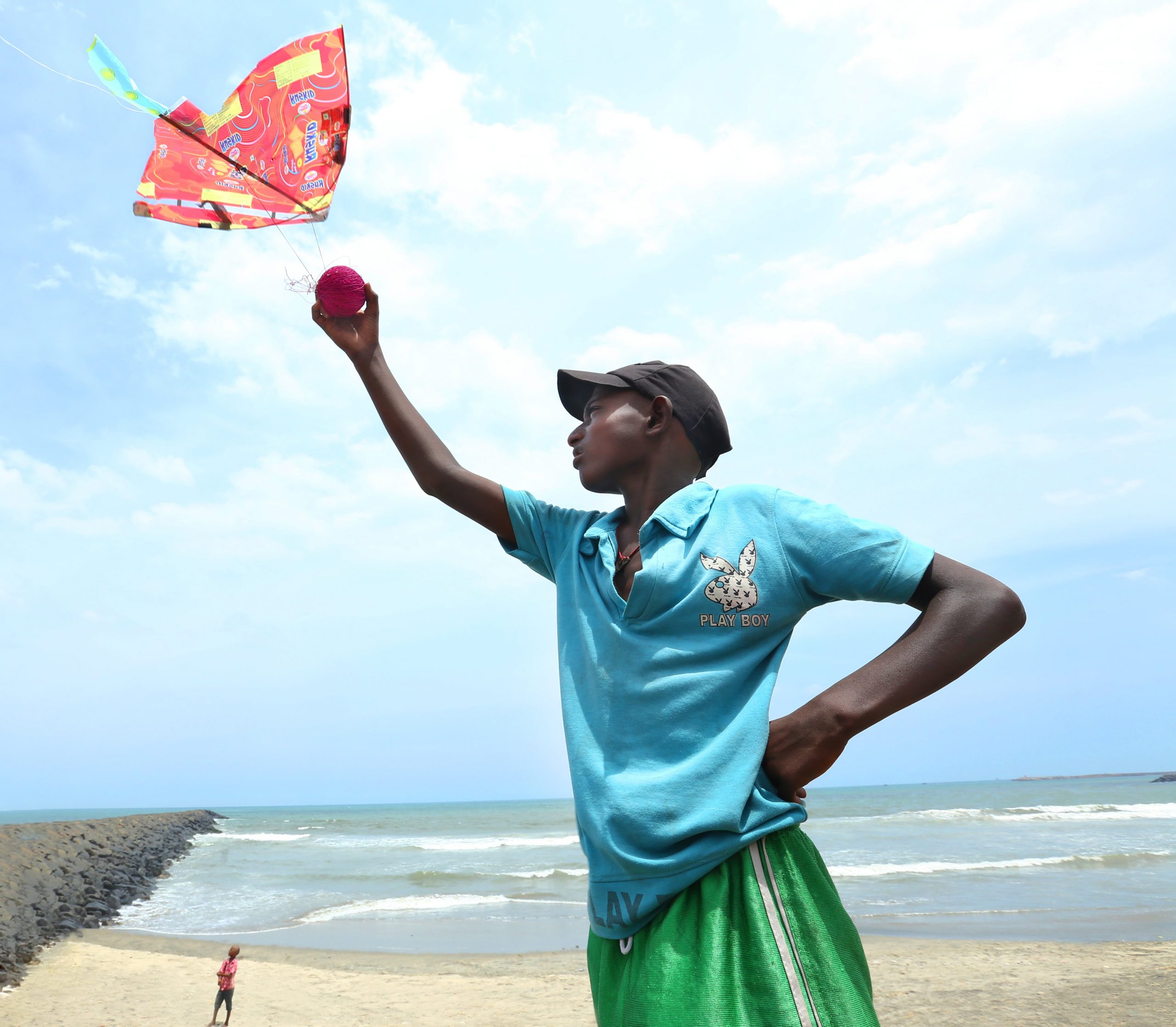A healthy ocean makes a healthy planet!
 Author: Dipali Sharma
Author: Dipali Sharma

(Dipali Sharma is Director Organisational Excellence at ActionAid Association. The views expressed here are personal and do not necessarily reflect those of ActionAid Association.)
(Human’s call it Earth, but with water covering more than 70% of its surface Planet Water would be a better name. That water dominates our existence was known to early humans. In the creation myths across the world the concept of primordial waters is one of the most universally appearing motifs. It is our land-based existence that have led us to name our planet accordingly, and this bias has led most of us to remain unmindful of the debt we owe to our oceans and seas.
(We often forget that oceans produce most of the oxygen in the planet through marine photosynthesis, with microscopic algae being the primary producer. Of course, most oceanic oxygen is consumed by marine life and decomposition, but as a net global oxygen producer, oceans are crucial to human life. Oceans also play a major role in carbon sequestration through various processes. However, climate change and water pollution are combining to damage the planets lungs and capacity to retain carbon. Scientists warn of grave escalation of the impact of climate change if this damage goes beyond the tipping point and the world’s oceans and seas become carbon emitters rather than acting as a carbon sink.
(The theme for World Oceans Day 2025, “Awaken New depths” calls for a deeper understanding, renewed commitment and innovative action to protect our oceans.
(India rests on the top of the Indian Ocean, and it is the weather caused by its warm waters that give us the life enriching monsoon. It is also the warmest of all oceans, putting it on higher risk. With a long coastline of about 7,517 km, and heavy reliance on marine ecosystems, India is highly vulnerable to the impacts of ocean warming and pollution. Coastal cities like Mumbai, Chennai, and Kolkata face flooding, saltwater intrusion, and displacement of millions. Ocean warming disrupts marine ecosystems, reducing fish populations. Plastic waste and industrial runoff poison waterways that eventually flow into the oceans, affecting fisheries and aquaculture. Multiple studies by the Central Marine Fisheries Research Institute and the Food and Agriculture Organisation indicate a 30–50% decline in key fish species due to climate change and habitat loss, though regional variations exist.
(Warmer oceans fuel cyclones and erratic monsoons, damaging agriculture and infrastructure. We are witnessing the increasing intensity and frequency of extreme weather events in our country. There is a 52% rise in severe cyclones in both the Bay of Bengal and the Arabian Sea. Floods are occurring at more frequency both in Assam and Kerala. Heat wave and drought conditions are occurring more frequently in North and Western India and around 34% of India’s coast faces erosion.
(Marine ecosystems sustain and provide a source of livelihood to over 250 million people across the nine coastal states and four Union Territories. India is the second largest producer of fish in the world with coastal waters contributing about 70% of India’s fish production, sustaining livelihoods of about 16 million fishers.
(Several villages across the coastal states of India have completely disappeared or have become ghost villages as families have moved out from these areas due to risks cause by land subsidence and inundation of deltas. Sea ingression resulting in increasing salinity of the soil has made land unfit for agriculture. While seasonal migration remains high in many of these coastal villages due to lack of livelihood opportunities, many families have migrated permanently to protect themselves from such vagaries. Ones who remain are required to continuous shift their habitation.
(Of late the Government of India has taken steps to address these issues. Aligned with its Nationally Determined Contributions (NDCs) and the UN Sustainable Development Goal 14 (Life Below Water), India is making efforts in coastal ecosystem restoration through bold, science-backed initiatives. On 5 June 2023 it launched MISHTI: Mangroves for Shorelines & Livelihoods — a ₹1,000+ crore mission to restore 540 sq. km of mangroves across nine coastal states and four Union Territories by 2030. This is based on the understanding that mangroves buffer cyclones, sequester 4x more carbon than rainforests, and support fishing communities. Similarly we can see the National Coastal Mission and the Green Climate Fund (GCF) invest $43 million into Enhancing Coastal Resilience (ECRICC) to protect mangroves in Sundarbans, Bhitarkanika, and the Andamans, coral reefs in Gulf of Mannar and Lakshadweepm so that more than 1.5 million people can be sheltered from rising seas and storms. The Finance Commission’s Erosion Combat Fund has earmarked ₹2,500 crore to resettle communities displaced by coastal/river erosion and build natural barriers in the form of dunes, vegetative bunds to protect land from ingress of sea water. There are signs of recovery, with studies revealing that that has been net gain of 364 sq. km (8%) in mangrove cover since 2013. In a situation where India’s coasts are climate battlegrounds, these initiatives show how ecological defence and livelihoods can coexist. The challenge is to scale up before sea levels rise 0.5m by 2100, as predicted by the IPCC AR6 documents.
(ActionAid Association has also been humbly contributing to these efforts. Environmental vulnerability intersects with socio-economic challenges and directly affects the lives and livelihoods of coastal communities and this underpins our approach of building community-led coastal resilience initiatives. We are privileged to be associated with the National Platform for Small Scale Fish Workers (NPSSFW), which in their founding document of 2016 spoke about how “The first victims [of the stressed aquatic resources] are the small fishers and fish farmers whose livelihood is inseparably linked with the quality of the water bodies. These small fishers and fish farmers are by far the largest primary stakeholders and natural custodians of our water bodies. Losing their livelihood they are being turned into development refugees and have to migrate to other occupations and areas in search of a living.” At ActionAid Association our interventions seek to build community-led, people centric solutions to protecting and promoting ecological diversities and resources.
(The recently initiated mangrove restoration projects implemented by ActionAid Association, with the support of SBI Foundation in the Sundarbans (West Bengal) provides compelling evidence of this approach. The plan is to ensure that 1.87 million mangroves will be planted across 640 acres of embankments and coastlines in 40 villages, in the Gosaba and Basanti blocks, of South 24 Parganas district in the state. These will be women-led efforts, with local women’s groups driving the project—collecting seeds, raising nurseries, and earning income in the process. Native species will be planted, especially climate-resilient varieties including Baain (Avicennia spp.), Goran (Ceriops decandra), Geowa (Excoecaria agallocha), Rhizophora, Sonneratia (which also has medicinal value), and Bruguiera species. As the region is inhabited by vulnerable communities, moringa and neem will be planted in homesteads to offer nutrition and medicinal value.
(To ensure sustained community engagement, eco-clubs with students, green coalitions with grassroots-based civil society organisations and citizen groups will be involved to promote waste-to-manure, seed-ball preparation, and organic farming. Local activists will build coordination with Panchayats, Forest/Fisheries Departments, State Coastal Zone Management Authority, the National Institute of Ocean Technology (NIOT) and the Central Marine Fisheries Research Institute (CMFRI) to ensure policy alignment. Project teams will reach out to Jadavpur University, Kalyani University, and technical institutes for scientific expertise.
(Through this Sundarbans project ActionAid Association seeks to contribute to building a blueprint for integrating ecology, economy, and equity—reaffirming that mangrove restoration can protect vulnerable coasts, enhance biodiversity, create jobs (especially for women) and strengthen climate resilience.
(Let us work with the local and Indigenous communities who have long cared for these landscapes and we can ensure a more sustainable future for our planet and people. From reducing plastic pollution to supporting sustainable fisheries, every action counts. On World Oceans Day let us renew our pledge to safeguard our oceans for future generations—because a healthy ocean means a healthier planet.
Disclaimer: The article was originally published on down to earth. The views expressed in the article are the author’s and do not necessarily reflect those of ActionAid Association.
